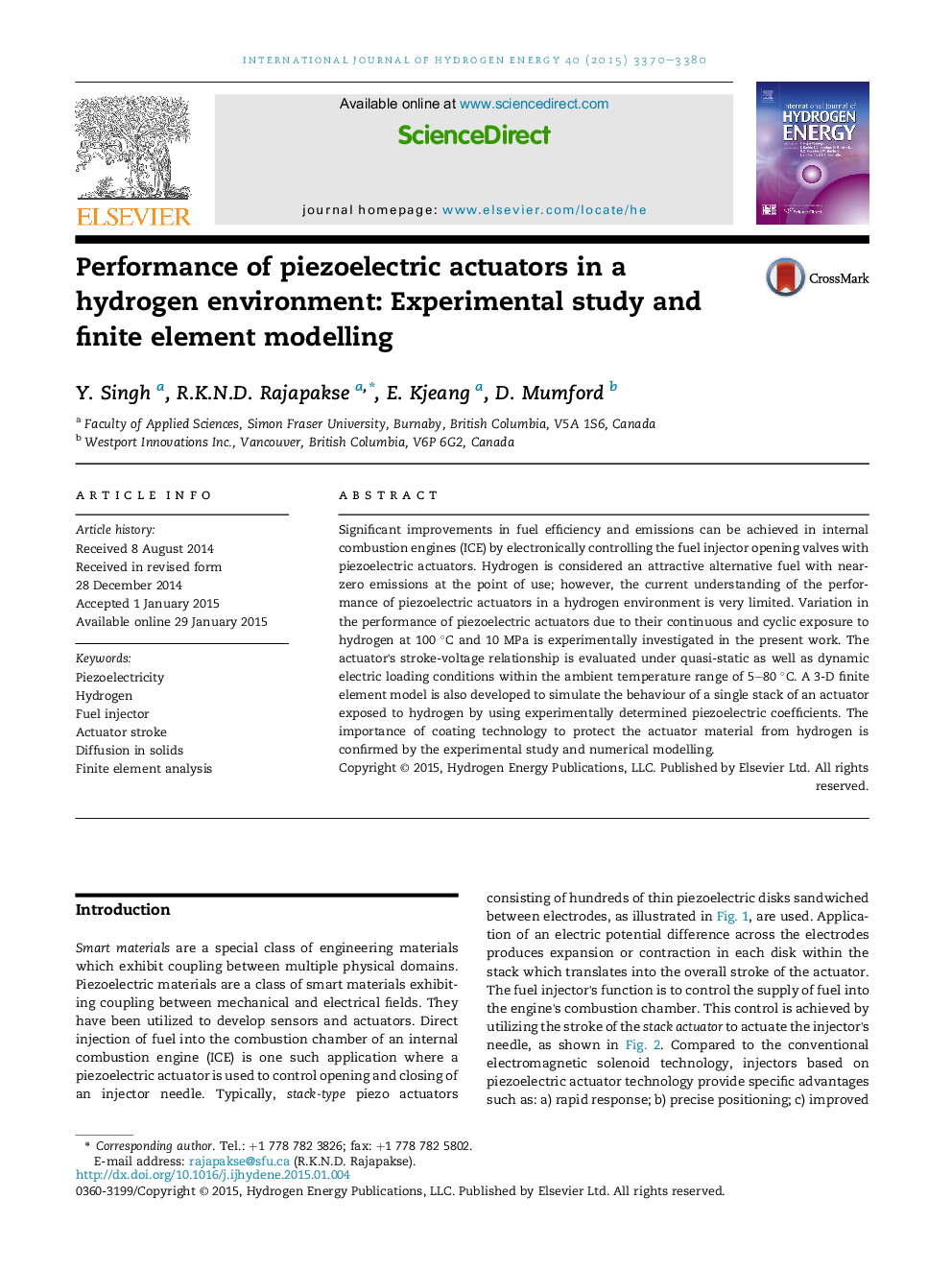| Article ID | Journal | Published Year | Pages | File Type |
|---|---|---|---|---|
| 1272033 | International Journal of Hydrogen Energy | 2015 | 11 Pages |
•Piezoelectric stack actuators were exposed to hydrogen at 100 °C and 10 MPa.•Actuator performance at fuel injector conditions was unaltered by the exposure.•Resistance to hydrogen was facilitated by a protective surface coating.•Dielectric, microstructure and fatigue investigations supported the findings.•FEM simulations predicted delamination and performance loss in the absence of coating.
Significant improvements in fuel efficiency and emissions can be achieved in internal combustion engines (ICE) by electronically controlling the fuel injector opening valves with piezoelectric actuators. Hydrogen is considered an attractive alternative fuel with near-zero emissions at the point of use; however, the current understanding of the performance of piezoelectric actuators in a hydrogen environment is very limited. Variation in the performance of piezoelectric actuators due to their continuous and cyclic exposure to hydrogen at 100 °C and 10 MPa is experimentally investigated in the present work. The actuator's stroke-voltage relationship is evaluated under quasi-static as well as dynamic electric loading conditions within the ambient temperature range of 5–80 °C. A 3-D finite element model is also developed to simulate the behaviour of a single stack of an actuator exposed to hydrogen by using experimentally determined piezoelectric coefficients. The importance of coating technology to protect the actuator material from hydrogen is confirmed by the experimental study and numerical modelling.
